Desire paths: the illicit trails that defy the urban planners | Cities | The Guardian
Desire paths as urban 'civil disobedience' | News | Archinect
With a video overview here from a week ago:
How Footpaths Help Shape Our Technology on Cheddar
But here's a particularly good piece from a couple of years ago, which makes very interesting reading:
ARTICLE BY KURT KOHLSTEDT
Least Resistance: How Desire Paths Can Lead to Better Design
Informal ‘desire paths‘ can form with as few as fifteen traversals of an unpaved route, creating spontaneous new trails shaped by pedestrians effectively voting with their feet. These paths frequently become self-reinforcing: others intuit the potential advantages of a newly-forming route and follow it, thus eroding it further and enhancing its visibility.

Such unstructured routes can develop for all kinds of reasons. Some present obvious shortcuts or offer less-steep courses while others allow people to avoid alarmed exits or address regional superstitions.
Non-landscape analogs can be found in the forms of well-worn interior floors, sunken stone staircase steps or even the bruised sides of wooden doors, where people naturally press the same place each time to open them.
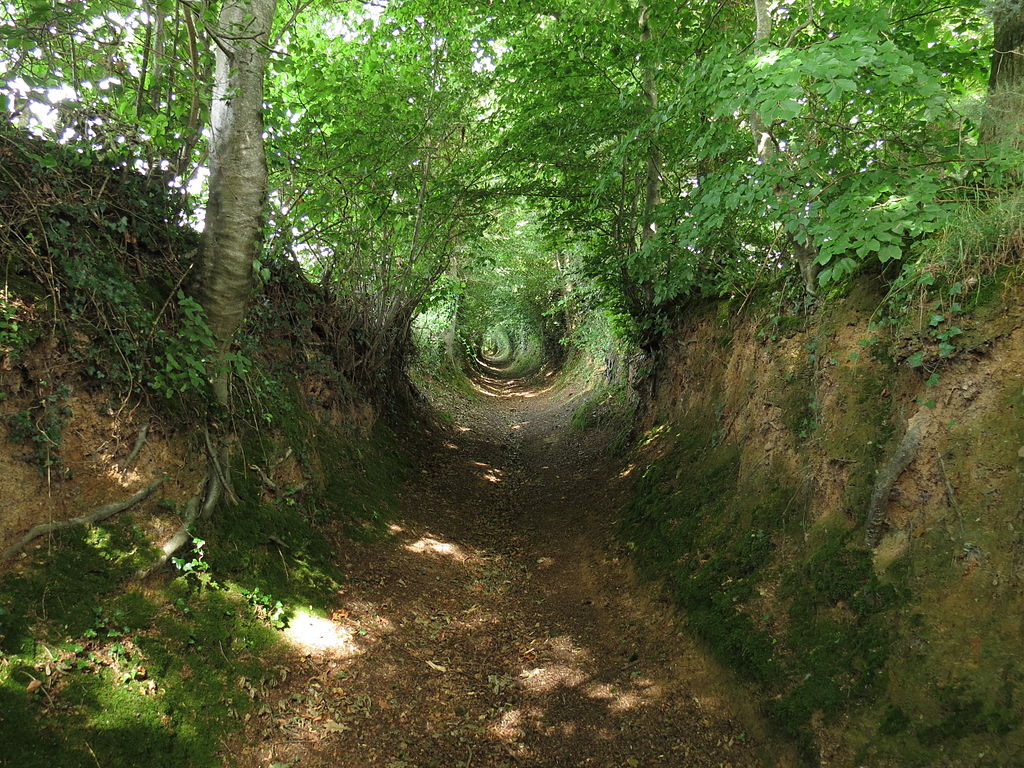
In Europe and the Middle East, ancient sunken lanes known as ‘holloways‘ (or: hollow ways) represent a particularly extreme expression of the desire path phenomenon. Many of these semi-subterranean routes have formed over hundreds or even thousands of years, eventually appearing more like a tunnel than a pathway.
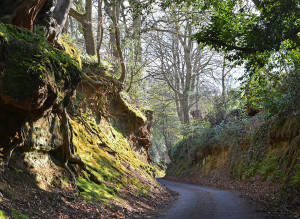
Holloways generally reflect a confluence of conditions, including heavier usage by vehicles, softer ground materials and high desirability (for instance: a major route between towns or cities).
In some cases they also reflect a greater degree of intentionality, starting organically then being manually carved out as irrigation channels or for use as trenches during times of war.

Attempts to curb the use of more everyday desire paths through signage or physical barriers can have mixed results, including the creation of new and different alternatives, equally frustrating to those who would block their growth.
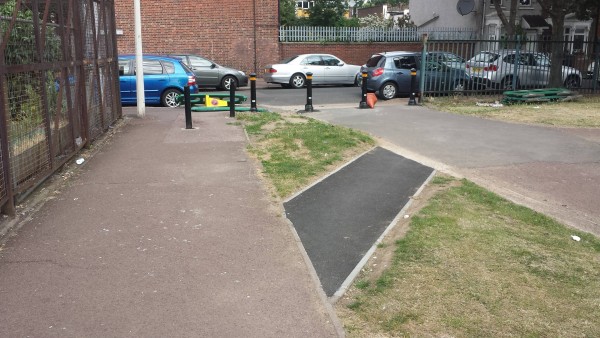
While these unsanctioned shortcuts can be frustrating to landscape designers, some urban planners look to them as they map out and pave new official paths, letting users lead the way.
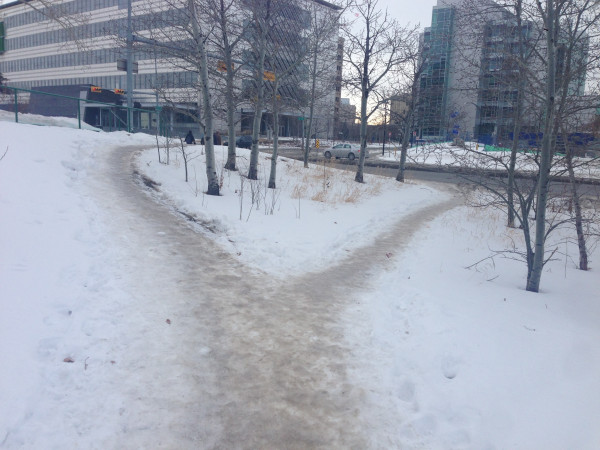
In Finland, for example, city officials document where people walk in parks after the first snowfall of the year, then integrate that data into their iterative trail system planning processes.

A number of educational institutions, including Virginia Tech and the University of California, Berkeley, have reportedly waited to see which routes students, faculty and staff would take regularly before deciding where to pave additional pathways across their campuses.
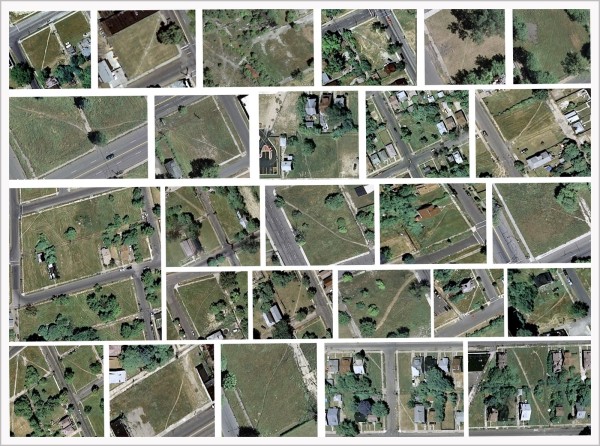
General principles for path design can also be reverse-engineered from the specific case studies. These can, in turn, be applied to future from-scratch projects at larger scales, from cross-city trail networks to public transportation infrastructure.
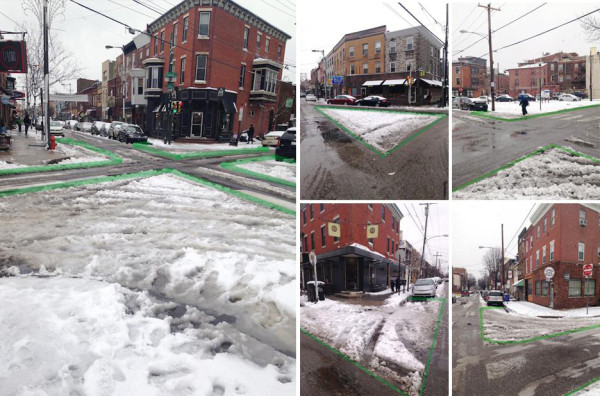
A similar strategy has been proposed for analyzing ‘sneckdowns‘ (a portmanteau of ‘snowy’ and ‘neckdowns’) that show up in post-snowfall driving patterns on wintry city streets. In this case, though the results still serve those on foot, it is the absence of (vehicular) traffic and not the presence of (foot) traffic that can show new ways forward
Highlighting areas of snow-covered road left untouched by cars reveals ideal places for potential for traffic-calming interventions, curb bump-outs and pedestrian islands. The reasoning is straightforward: if the cars do not need the space in winter, they should not need it at all.
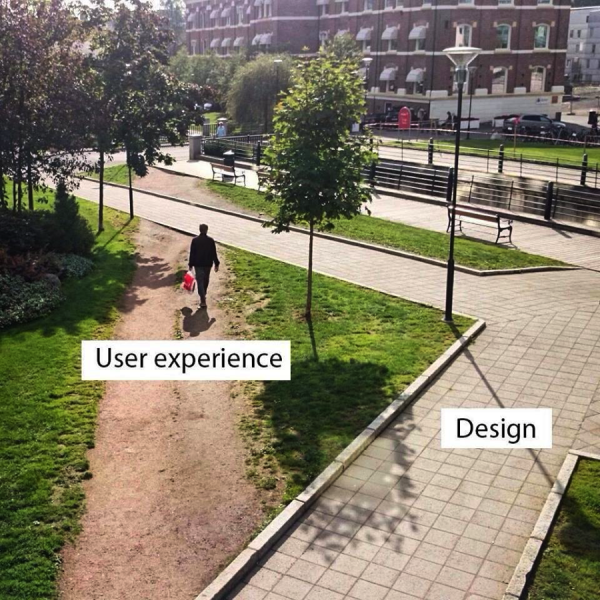
The appeal of desire paths has taken a further twist in the digital age as human-computer interaction and usability designers have begun adopting the language of these intuitive routes.
Many experts call for approaches that “pave the cowpaths,” supporting what users are already doing. Hashtags and at-signs were not introduced by Twitter initially; their current functional behavior instead grew out of community uses, inspired by IRC (Internet Relay Chat) then eventually incorporated more officially as organizational devices.
Digital strategists are thus following the footsteps of their physical-space compatriots. “This perfect expression of natural purpose can extend into other interactions in the real world and in the software world,” writes usability engineer Carl Myhill of desire paths. “Rather than trying to understand user needs from a focus group, being alert for desire lines will show you users’ actual purpose more directly.”
.
.
.

No comments:
Post a Comment